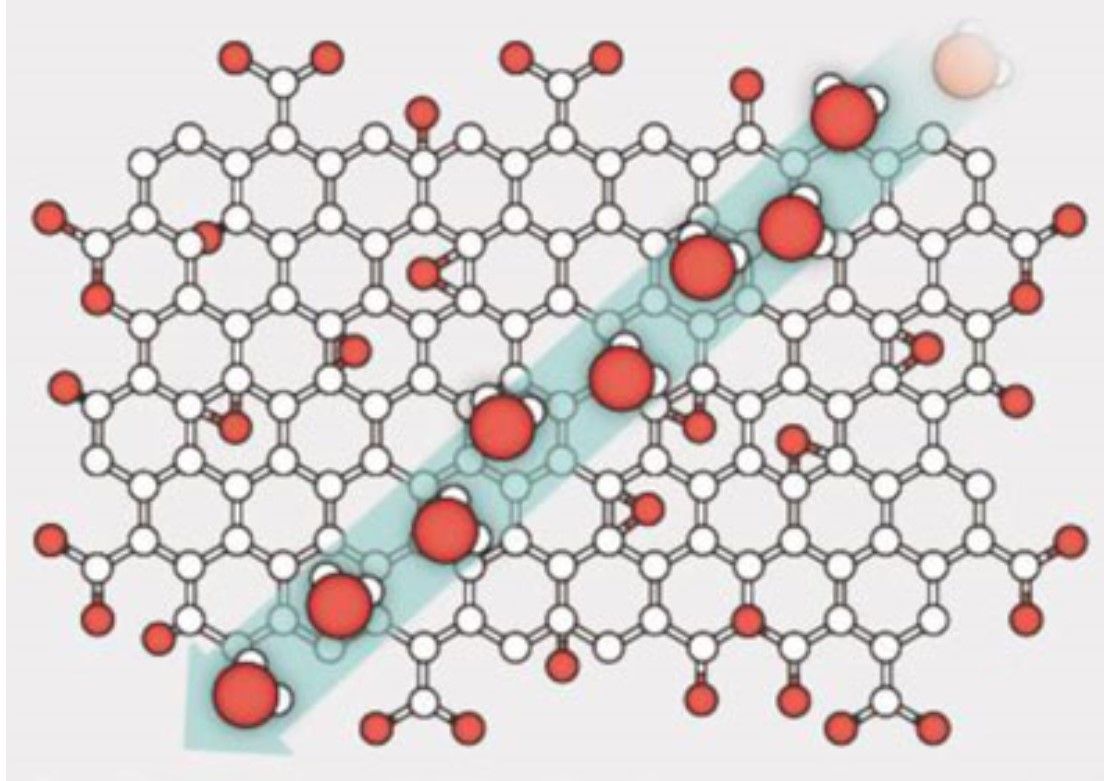Nanotechnology scientists are closing in on a practical use for graphene as a desalination membrane. However, designs for graphene-based water filters consistently hit two major problems.
1. Scalability.
While graphene is incredibly strong for its size, measuring only one atom thick still creates problems of scalability. As the scientific journal Physics World reports, “While this [desalination] works well with micrometre-sized membranes, it is very difficult to make larger graphene sheets without defects, which act as large pores that let salt through. Defects also reduce the mechanical strength of the graphene, making it difficult to create larger membranes.”
2. Swelling.
To avoid the defects and strength issues found in large graphene sheets, numerous studies have looked at a patchwork of smaller, overlapping sheets of graphene oxide. Water could still permeate through the gaps between the sheets, whereas the larger salt ions would become stuck. While scientists have already created centimetre-sized membranes this way, as the layers became wetter, they began to swell up, which let more salt pass through.
These challenges, created by nano-sized graphene, have now potentially been solved by another nano-scale raw material; carbon nanotubes.
This is the second half of an article on how carbon nanotubes could create a stronger, better water filter. Follow this link to read part one.
The breakthrough was made by a joint Chinese/American team, led by nanotube specialists, Yanbing Yang and Xiangdong Yang from Wuhan University in China. By depositing a mesh-like network of single-walled carbon nanotubes (SWCNTs) on top of a graphene sheet, the researchers were able to both strengthen the graphene, as well as plug any cracks, tears, and gaps in the surface at the same time. Only once this has been achieved are the pores that make up the membrane scratched in place.

The discovery has now been explained in detail in the journal Science, where the team, “… report a large-area graphene-nanomesh/single-walled carbon nanotube (GNM/SWCNT) hybrid membrane with excellent mechanical strength while fully capturing the merits of atomically thin membranes. The monolayer GNM features high-density, sub-nanometer pores for efficient transport of water molecules while blocking solute ions or molecules to enable size-selective separation. The SWCNT network physically separates the GNM into micro-sized islands and acts as the microscopic framework to support the GNM, thus ensuring the structural integrity of the atomically thin GNM.”
The result is a practical membrane that works; a graphene oxide layer that forms a perfect sieve.
As the Wuhan University press release states, the SWCNT reinforced membranes, “ … show high water permeability and high rejection ratio for salt ions or organic molecules, and they exhibit excellent anti-biofouling performance. This research work overcomes the intrinsic limitations of 2D materials in practical separation applications.”
Adding that, “[The work] … represents a milestone in the development of carbon nanomaterial-based membranes.”

While the team can foresee no problems with scaling the membrane up for industrial use, further work is still required before the graphene/CNT membrane can be deployed. At present, lab tests show the membrane removing between 85 and 97% of salt from seawater, which for such a large membrane is an impressive result. However, commercial desalination systems typically require as much as 99% removal.
Already the team are working on a possible fix that involves stacking several layers of nanotube-reinforced graphene membranes on top of each other. Molecules could then enter the membrane via a pore but would need to travel some distance between layers to find a pore opening in the next layer.
If these further challenges can be surmounted then carbon nanotubes may provide the answer to many questions, not in desalination, but also in the agricultural and chemical industries. This is because nanotube supported membranes could be adapted for separating industrial chemicals, or for removing minute toxins from water in inland regions.
However, it has been predicted that the conversion of sea water to fresh will create the biggest benefits; a discovery that could save millions of dollars and hundreds of millions of lives.
As the BBC reports, “By 2025 the UN expects that 14% of the world's population will encounter water scarcity. [Additionally] As the effects of climate change continue to reduce urban water supplies, wealthy modern countries are also investing in desalination technologies.”
Following this research, maybe carbon nanotubes are the solution to filtering salty solutions.
Photo credit: WuhanUniversity, Science, Physicsworld, BBC, Farm1, Ocregister & Worldfinance
